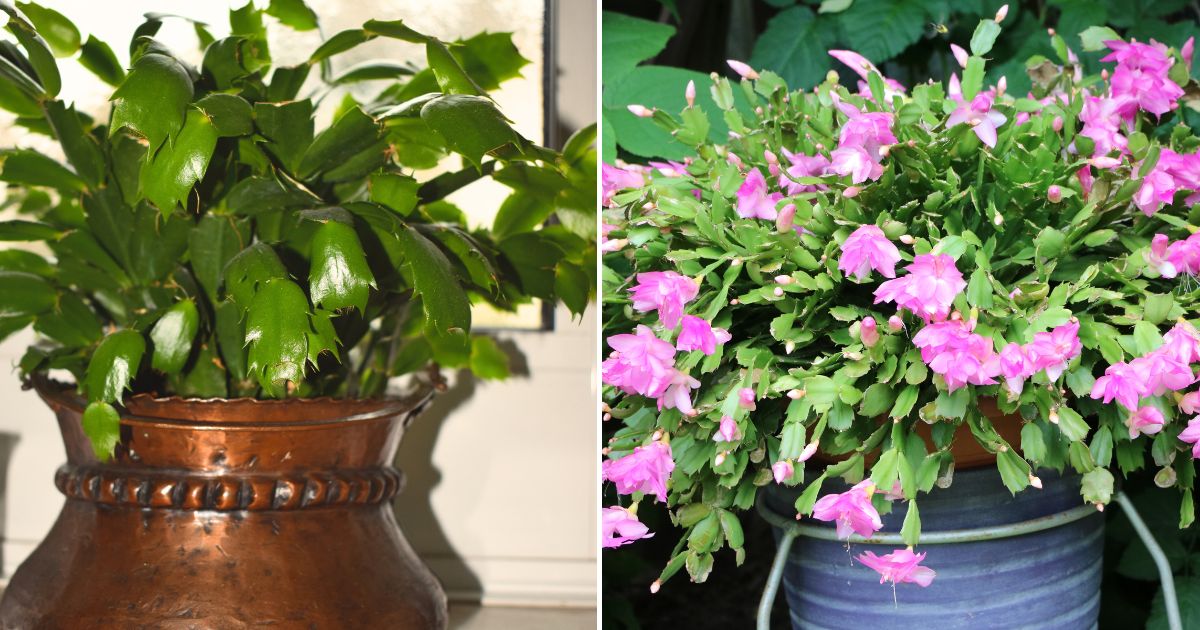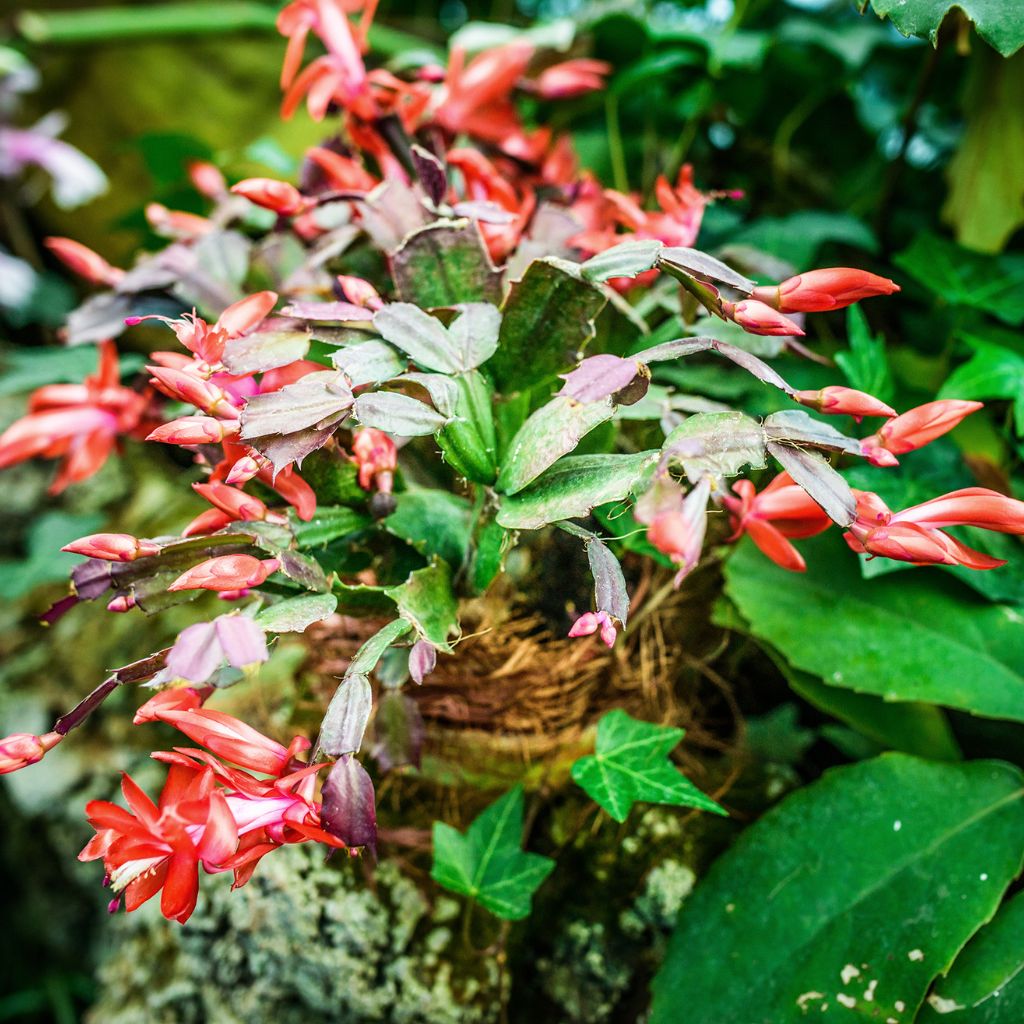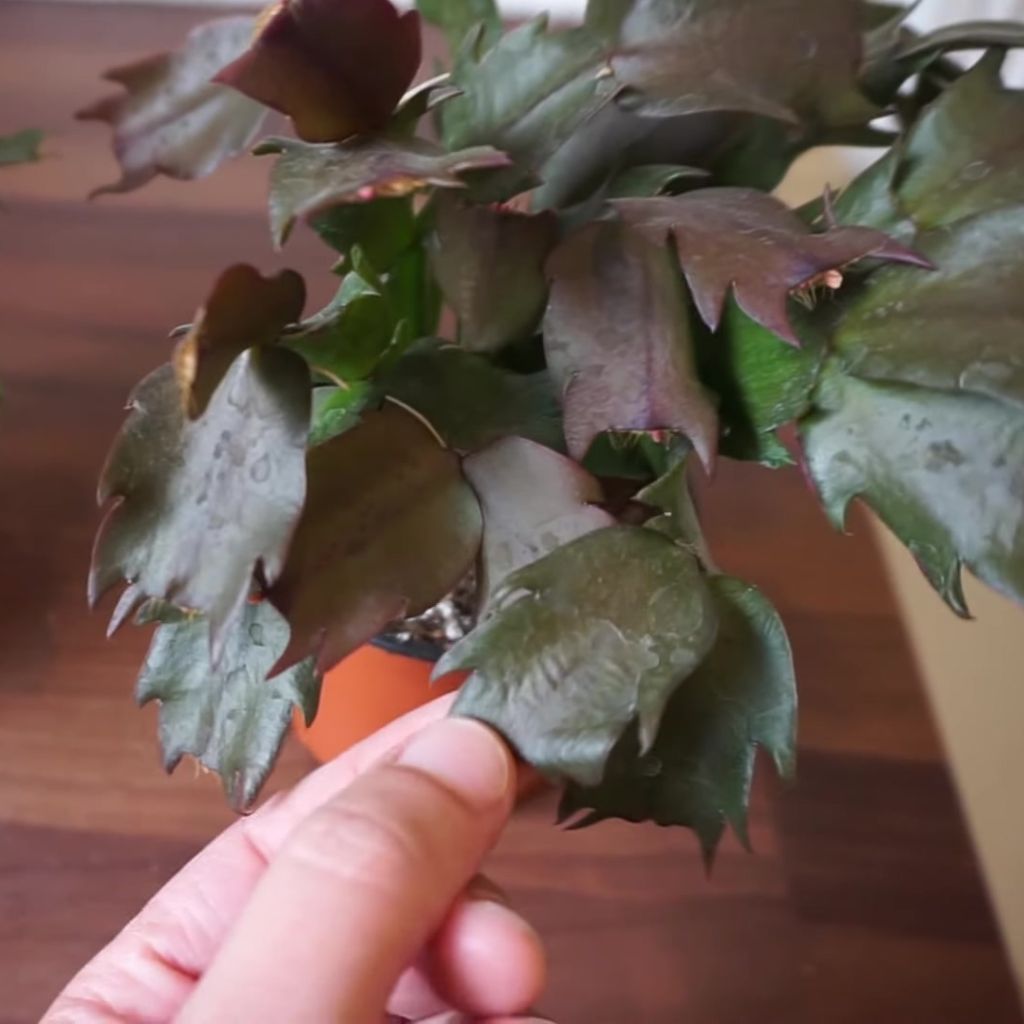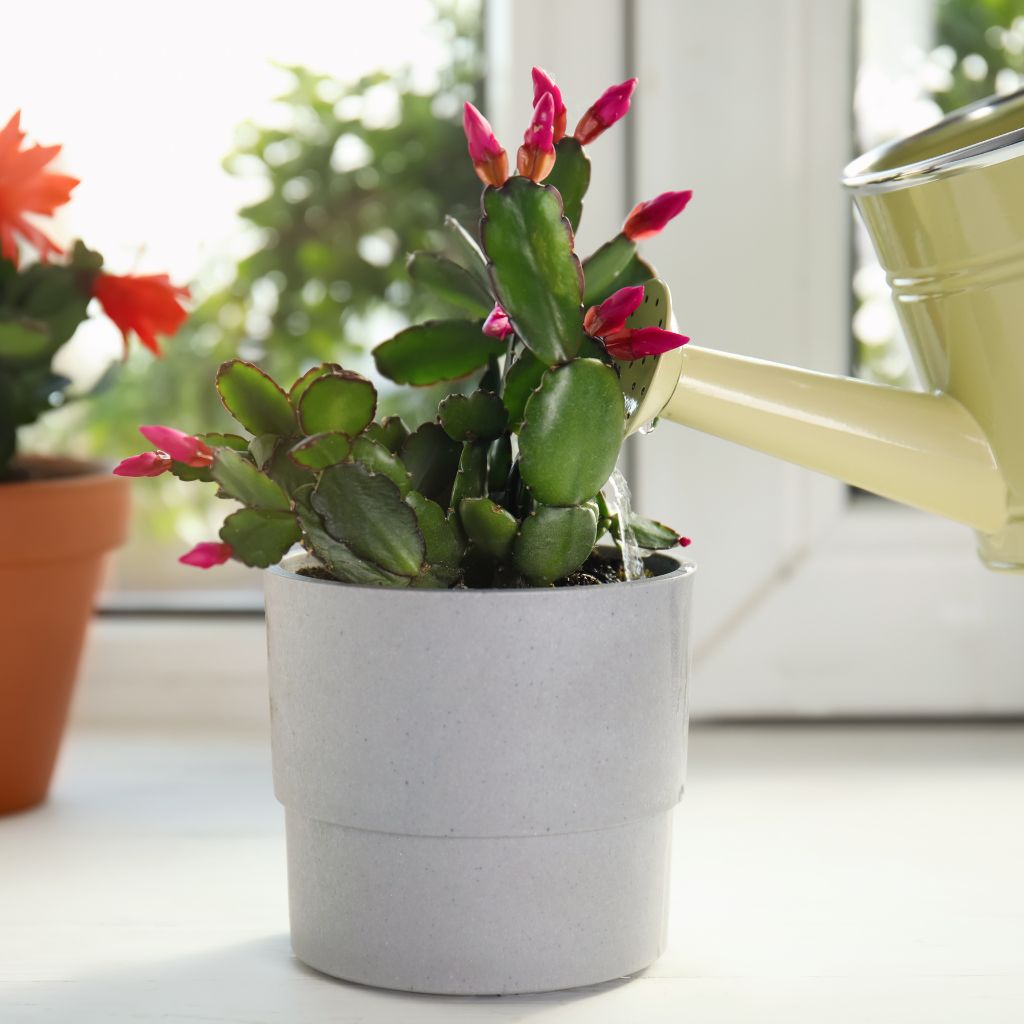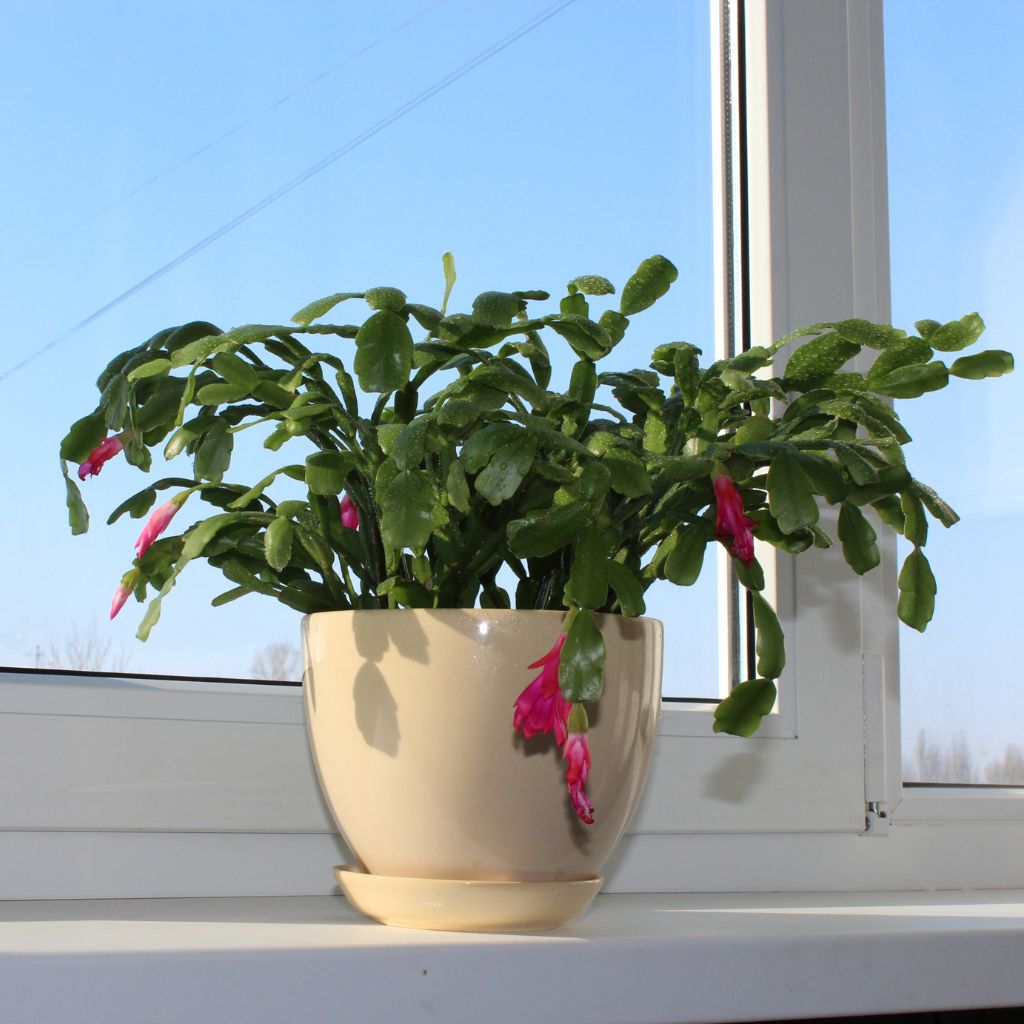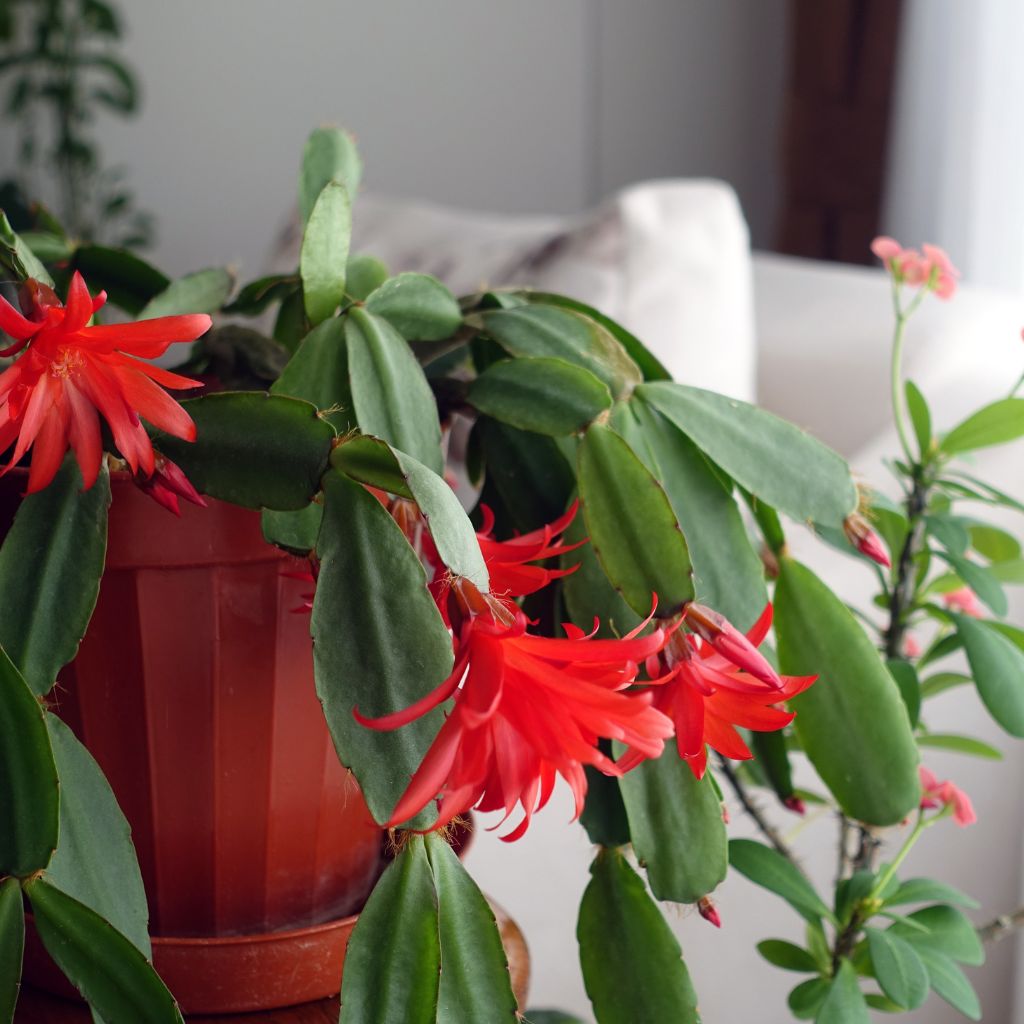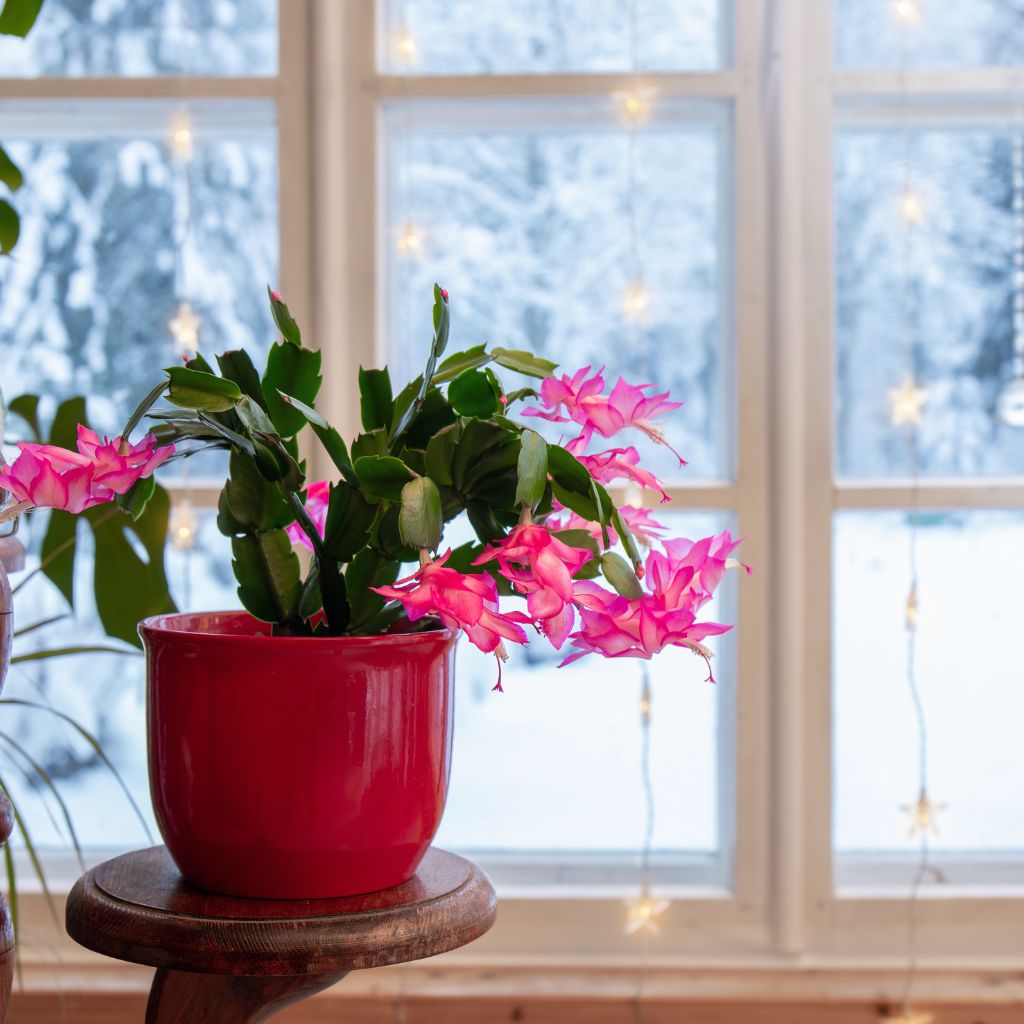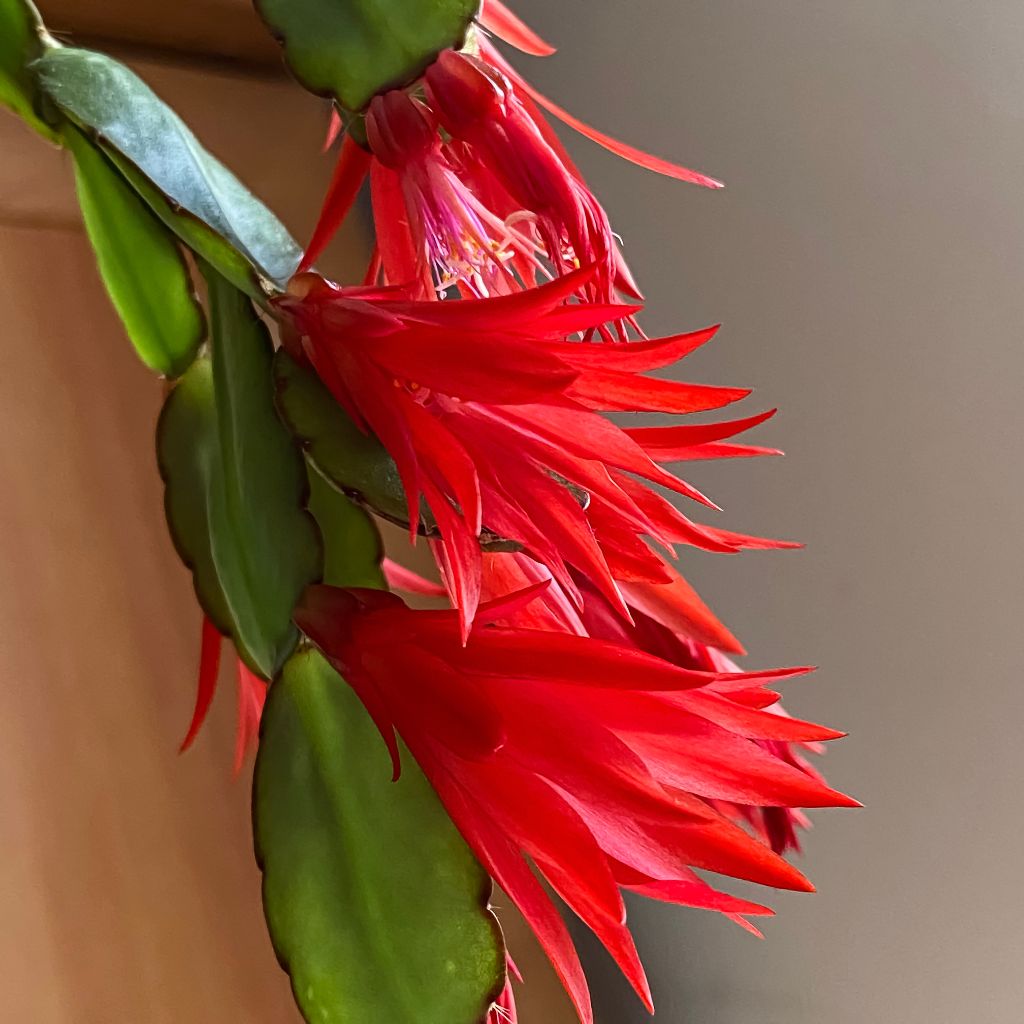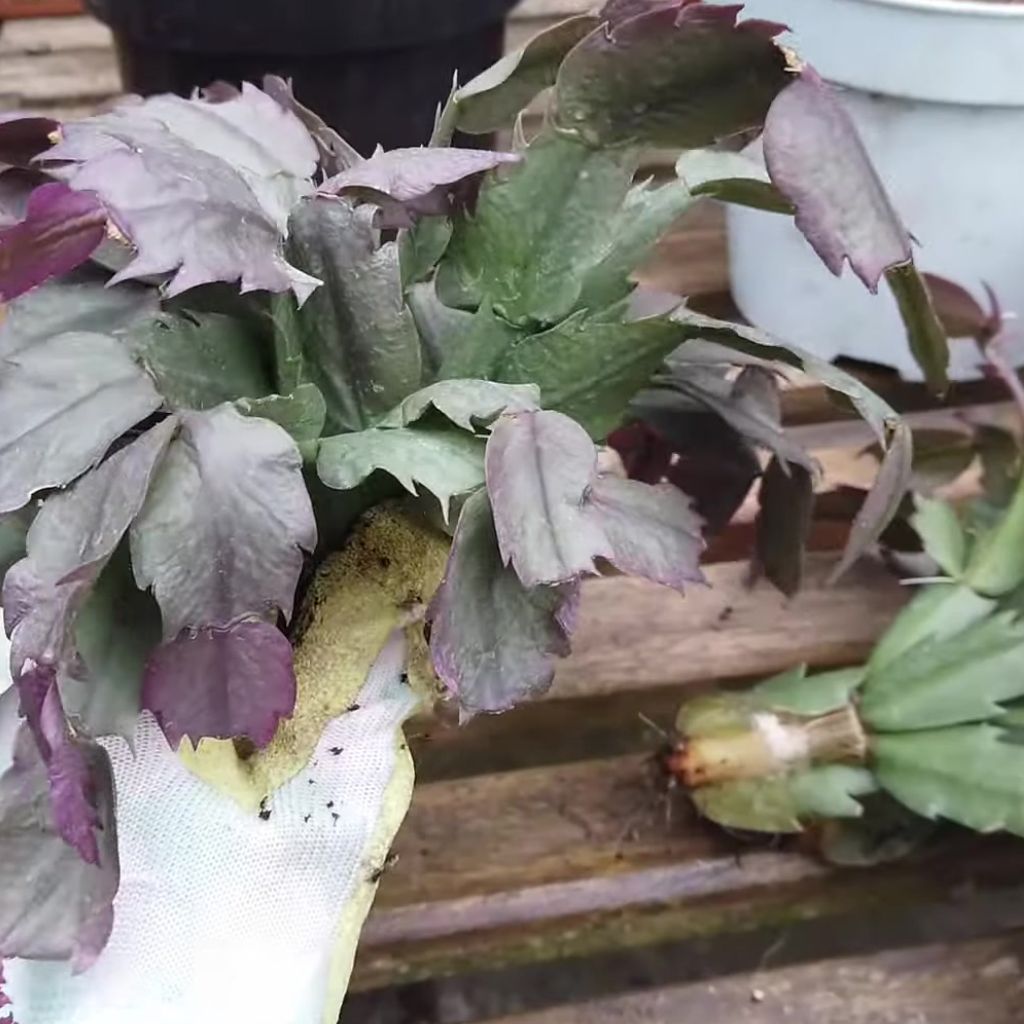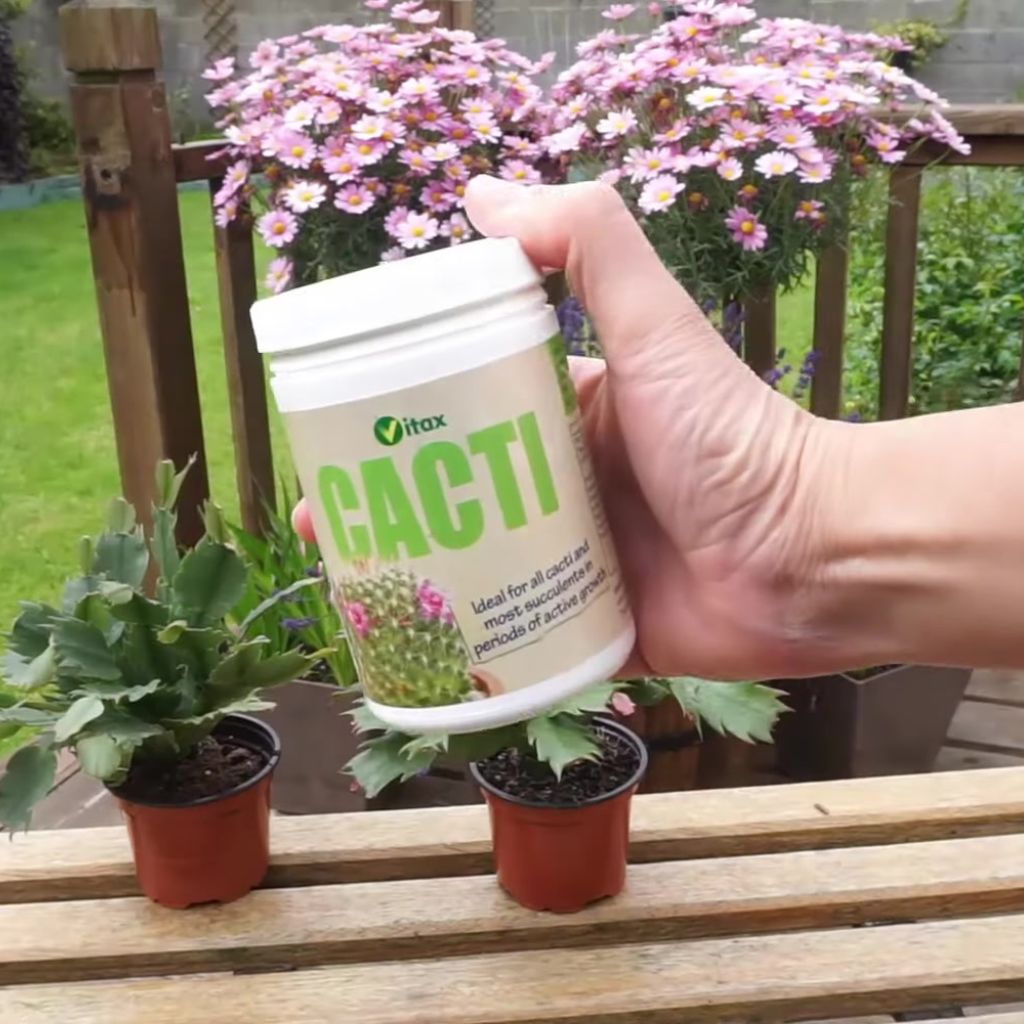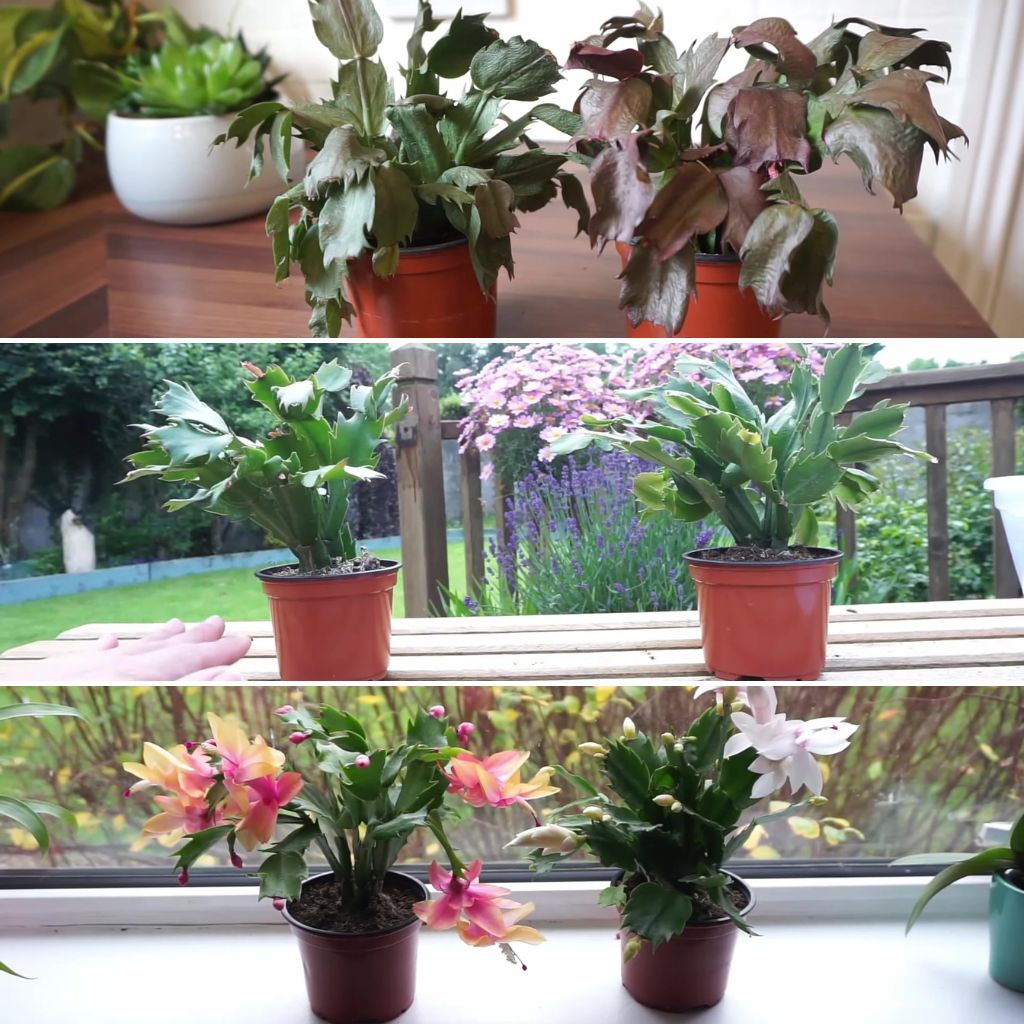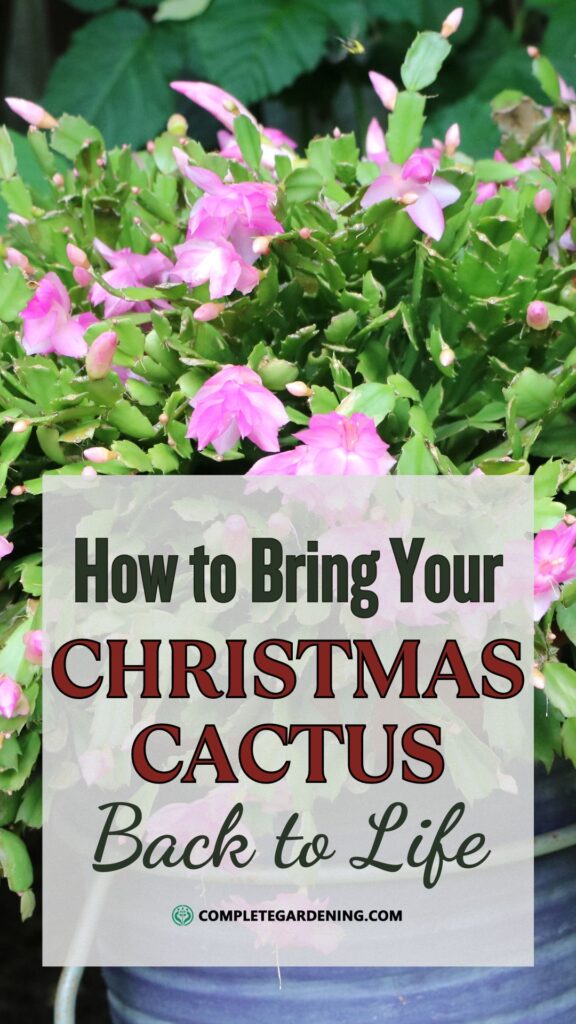If there’s one plant that’s both classic and festive, it’s the Christmas cactus. Known for its beautiful blooms around the holiday season, this low-maintenance plant is a favorite in homes during the colder months.
But what happens when your beloved Christmas cactus starts looking a little sad? Maybe the leaves are drooping, or it’s not flowering like it used to. Don’t worry! With a little TLC, you can easily bring it back to life and have it thriving in no time.
Let’s dive into some simple steps on how to revive a struggling Christmas cactus and get it back to its former glory.
Understanding Your Christmas Cactus
Before we get into the nitty-gritty of reviving your Christmas cactus, it’s important to understand a bit about what makes this plant unique. Unlike desert cacti, the Christmas cactus (Schlumbergera spp.) is a tropical plant native to the rainforests of Brazil.
It thrives in humid, shady environments with plenty of moisture. So, while it’s called a cactus, it doesn’t enjoy the same hot, dry conditions that you’d expect for most cacti.
This is where a lot of people get tripped up. Treat your Christmas cactus like a desert cactus, and you’ll quickly notice signs of stress.
But, with the right care, it can live for decades and even be passed down through generations. Let’s explore what might be going wrong and how to fix it.
Signs of a Struggling Christmas Cactus
First things first, let’s identify the signs that your Christmas cactus is struggling. Here’s what to look for:
Drooping or limp leaves: This is often a sign of under-watering or over-watering.
No blooms or very few blooms: If your cactus isn’t blooming around the holidays, something’s off with its care routine.
Yellowing leaves: This can indicate too much direct sunlight or poor soil drainage.
Wilting despite watering: This could be a sign of root rot, especially if the soil feels soggy or waterlogged.
Once you’ve spotted the problem, it’s time to take action.
Step 1: Check the Watering
One of the most common reasons for a struggling Christmas cactus is improper watering. It’s easy to over-water or under-water this plant, and both can lead to problems. Let’s break it down:
Over-Watering:
If your Christmas cactus is wilting or has yellowing leaves, over-watering could be the culprit. These plants don’t like to sit in soggy soil, and too much water can lead to root rot.
How to Fix It:
Let the soil dry out between waterings. The top inch of soil should feel dry before you water again.
If the soil is constantly wet, consider repotting your cactus in fresh, well-draining soil.
Make sure the pot has drainage holes to allow excess water to escape. No one likes soggy feet, and neither does your cactus!
Under-Watering:
On the flip side, under-watering can cause the plant to look limp and shriveled. If you’ve been skipping waterings or the soil feels bone-dry, it’s time to give your cactus a drink.
How to Fix It:
Water your Christmas cactus thoroughly, allowing the water to run through the drainage holes.
After watering, make sure you empty the saucer beneath the pot so that the plant isn’t sitting in water.
Keep an eye on the soil, and water again when the top inch feels dry.
Step 2: Adjust the Lighting
Another potential issue for a struggling Christmas cactus is improper lighting. These plants naturally grow in the shade of trees, so they’re used to indirect light.
Too much direct sunlight can scorch the leaves, while too little light can stunt growth and prevent blooming.
How to Fix It:
Place your Christmas cactus in a bright room, but away from direct sunlight. A north or east-facing window is ideal.
If the plant is in a dark corner, consider moving it to a spot with more light or supplementing with a grow light.
Remember, balance is key. You want enough light to encourage healthy growth, but not so much that the leaves get sunburned.
Step 3: Refresh the Soil
Your Christmas cactus might be struggling because it’s outgrown its pot or the soil has become compacted and doesn’t drain well anymore. If the soil feels hard, or you haven’t repotted your cactus in years, it’s probably time for a soil refresh.
How to Fix It:
Choose a well-draining potting mix, ideally one made for cacti or succulents. You can also mix in some perlite or sand to improve drainage.
Gently remove the cactus from its pot, being careful not to damage the roots.
Shake off the old soil and place the plant in a new pot with fresh soil. Make sure the new pot has drainage holes.
Water the cactus lightly after repotting, and give it a few weeks to adjust to its new home.
Step 4: Get the Humidity Right
As tropical plants, Christmas cacti love humidity. If your home is particularly dry, especially during the winter months when the heater is on, your plant may be suffering from a lack of moisture in the air.
How to Fix It:
Increase humidity around your Christmas cactus by placing a shallow tray of water nearby or using a humidifier.
Grouping your plants together can also help boost the humidity in the immediate area.
Misting the leaves occasionally with water can provide a temporary humidity boost, but be sure not to soak the plant.
Step 5: Encourage Blooming
One of the main reasons people love Christmas cacti is for their gorgeous blooms. If your cactus isn’t blooming, it’s likely due to a lack of proper care leading up to the holiday season.
Christmas cacti need a specific cycle of light and temperature to bloom.
How to Fix It:
Temperature: Keep your cactus in a cooler room, around 50-55°F (10-13°C), for six weeks leading up to its bloom time. This cool period mimics the plant’s natural environment and encourages blooming.
Light: Christmas cacti need about 12-14 hours of darkness each night for six weeks before blooming. You can cover the plant with a dark cloth or place it in a closet during the night to ensure it gets enough darkness.
With these conditions in place, your Christmas cactus should reward you with beautiful flowers right around the holiday season!
Step 6: Prune and Clean Up
If your Christmas cactus is looking leggy or overgrown, a little pruning can go a long way in helping it bounce back.
Pruning not only encourages new growth but also helps shape the plant and remove any unhealthy or damaged segments.
How to Fix It:
Use sharp, clean scissors or pruning shears to remove any weak, leggy, or damaged stems.
You can also prune after the cactus has finished blooming to encourage a fuller, bushier plant.
Don’t throw away the cuttings—Christmas cacti are easy to propagate. Just let the cuttings dry out for a day or two, then place them in soil to grow new plants!
Step 7: Fertilize (But Not Too Much)
While Christmas cacti don’t require a ton of fertilizer, giving them a little boost during their growing season (spring and summer) can help them thrive.
However, over-fertilizing can do more harm than good, so it’s important to get the balance just right.
How to Fix It:
Use a balanced, water-soluble fertilizer diluted to half strength. Apply it once a month during the growing season.
Stop fertilizing in the fall, about six weeks before the plant’s blooming period. This will help prepare it for flowering.
Avoid using a high-nitrogen fertilizer, as this can lead to lots of leafy growth but fewer blooms.
Step 8: Be Patient
Reviving a struggling Christmas cactus doesn’t happen overnight. It may take a few weeks or even months for the plant to fully recover, especially if it’s been neglected for a while. But with the right care, your cactus will start to show signs of improvement.
How to Fix It:
Stay consistent with your care routine. Water it properly, give it the right amount of light, and keep an eye on the humidity.
Don’t panic if it doesn’t bounce back immediately. Plants take time to adjust to new conditions, but with patience, you’ll see progress.
With the right attention and care, your Christmas cactus can go from struggling to thriving in no time.
Whether you’re dealing with drooping leaves, lack of blooms, or a plant that just seems “off,” these steps will help you troubleshoot the problem and get your plant back on track.
Remember, the Christmas cactus is a resilient plant. Even if it’s looking a little worse for wear right now, it has the potential to come back stronger than ever.
And once it’s healthy again, it’ll reward you with beautiful, festive blooms year after year. Just think of it as your holiday gift to yourself—a little bit of nature’s magic, right inside your home.
